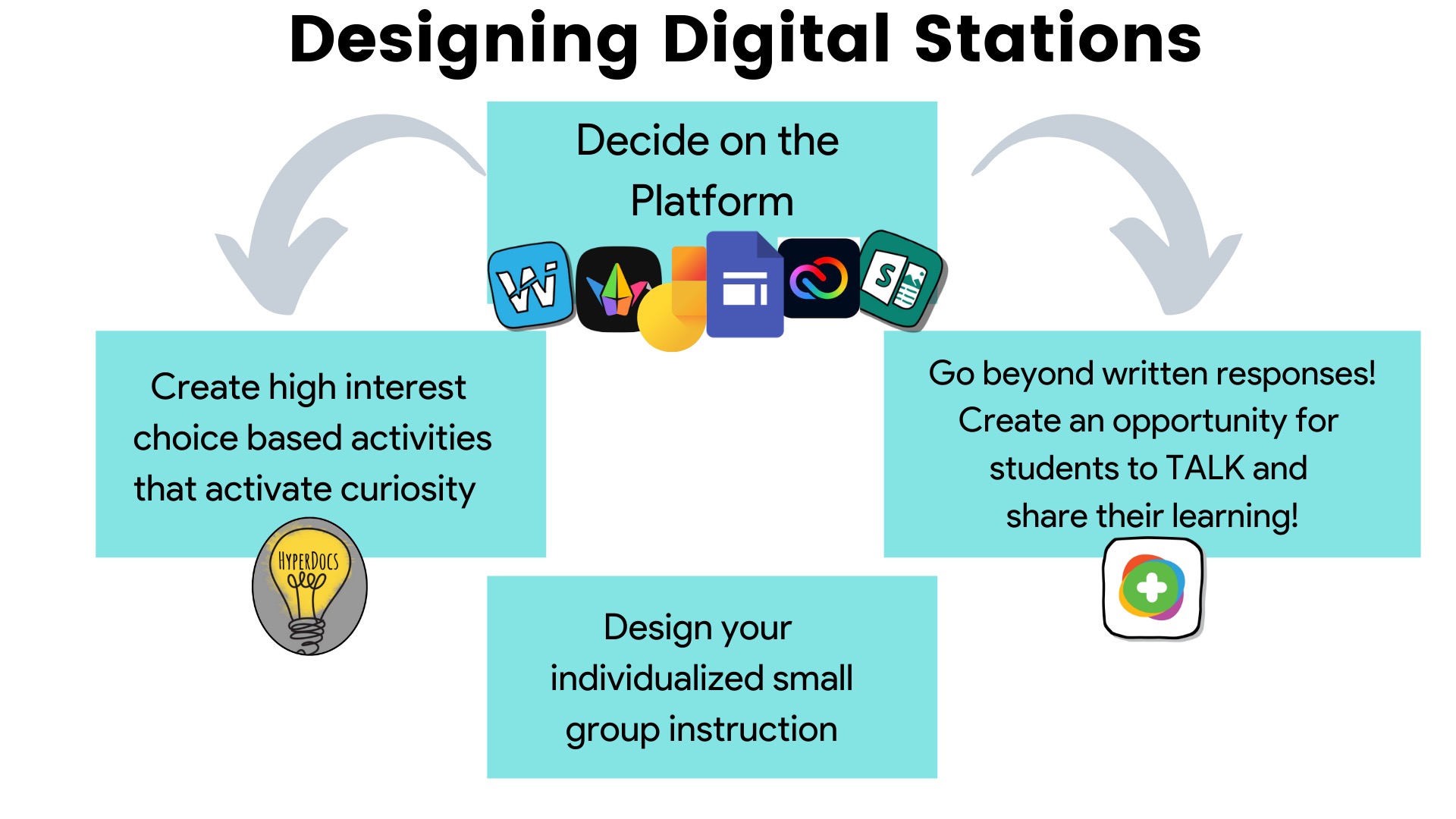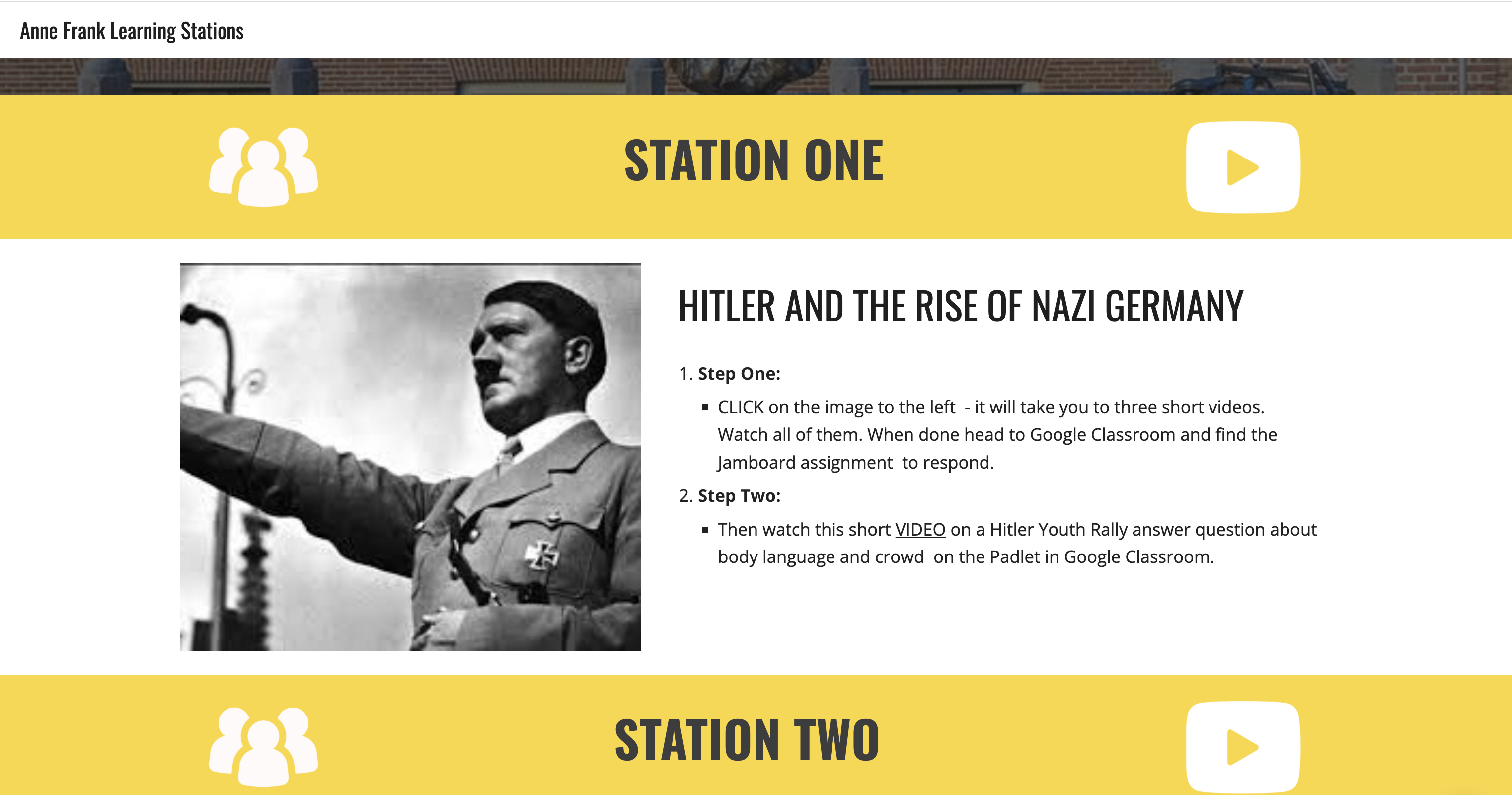The Infused Classroom Blog
Digital Learning Stations
Share Post
Why Do We Need Learning Stations?
There is much to learn from the wonder, excitement and efficient organization of the elementary school classroom. Rarely will you enter a bustling primary classroom where all students are moving lock step with the teacher; rather, your eye will be drawn to clusters of students working excitedly in centers while the teacher enjoys one on one or small group time with select students. How does this happen? Teaching and learning in the elementary school classroom is designed for differentiated learning, small group instruction and student collaboration. Incorporating learning stations into lesson design enables a myriad of opportunities for student engagement, dynamic grouping, discovery based learning and critical thinking. As students rotate through digital stations, accessing information, exploring topics, pondering open-ended questions, “found time” is naturally provided for the teacher to pull small groups for targeted skills based instruction, reteach of concepts, review or enrichment.
👉🏼Next week look for 10 ideas for Digital Stations👈🏼
Small group instruction, supported by digital stations, organically creates a smaller teacher to student ratio. More importantly, it creates an essential block of time for a teacher to have meaningful interactions with students, building relationships, chunking content and individualizing instructional strategies to meet each student’s needs. It promotes student autonomy over their learning and ignites curiosity about the topic at hand!
Digital Learning Stations in Middle and High School.
Unfortunately, this powerful model often does not make its way past the 5th grade. One could argue that there is no better place for digital stations than middle and high school classrooms. Larger class size and shorter class time periods often means teachers need small group instruction to build relationships and better understand all students and their individual needs. Most importantly, additional scaffolding is an inherent need in a more dense, content heavy curriculum.
👉🏼Next week look for 10 ideas for Digital Stations👈🏼
Digital Learning Stations Made Easy
What to consider when creating a digital learning station.
1. Decide on your digital platform
You can create a Wakelet, Google Site, Adobe Page, Microsoft Sway or a Padlet Wall. If you are not as savvy with these tools, think about simply creating stations in Google Classroom or Teams.
2. Create activities that call for students to explain their thinking and learning.
An example activity might be watching a high interest video paired with a short reading passage. Having both a video and written component will help you meet the needs of varying learners. Next, and this is really important - provide an opportunity for students to write and TALK about their learning. Talking about the learning gives students a moment to pause, think and reflect on what they have consumed. A time to use their words to make their thinking and learning visible. Simply writing every response does not provide the cognitive struggle kids need to take the learning with them - to make the learning stick. Written responses are only 50% of the learning equation, when we forget to have students talk about learning - we miss a crucial cognitive element. And for some students this is how they can best tell you about their learning - like those students with dyslexia, our struggling writers and second language learners. Your pedagogical expertise here is in designing a learning experience that is high interest and has a component of interaction, and recall for kids who are moving from station to station. Not just simply creating an activity.
3. Create your small group instruction
Pull up a table and chairs and get to know your students!
4. Dynamically group students for station rotations
Learning stations are one of the best avenues for students to work in partners or trios to discover, examine and problem solve!
Things to consider with Digital Stations
Tips to make your stations and learning meaningful and interactive.
- Each station will need a learning goal which should be shared with the students.
- High-interest text and/or videos that students can consume (to help them reach the learning goal) is essential.
- Provide an opportunity for student interaction with the content - a place where students can TALK about their learning by explaining, showing and reflecting on that learning experience. This could even be done in a Think, Pair Share experience - but with middle school students I much prefer having them head to Flipgrid to talk about their learning.
- Each station provides an opportunity for students to see each other’s work, or watch and listen to each other’s responses - so they can see how and what other students are learning and help them to add to the conversation rather than think that their learning is static conversation between the teacher and themselves only.
- Provide students an opportunity for a quick recall to help interrupt forgetting - a great tool for this is also Flipgrid where they can record themselves re-explaining those important concepts.
Example of Stations Using Google Slides
This example asks students to watch several videos - but these videos are high-interest and can be done individually or as a small group. To make sure students have watched and understood the content they head to a Jamboard and Padelt assignment in Google Classroom though each of these could have been linked directly to the station itself.
Ironically, this practice is often neglected in middle and high schools for the very reasons it works…
1) Teachers are daunted by management issues given the higher class size. Truly, learning stations assist with management.
2) Teachers worry about students who are not self-directed and may need more guidance. Stations address this very need!
If we asked ourselves how this intervention might help negate the need for special resource classes - it is probably pretty intuitive that this meaningful practice is something missing in the places where it is probably needed most.


